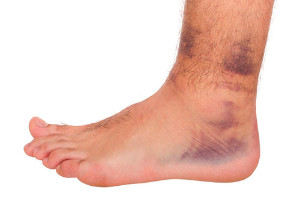Blogs
How to Treat Ankle Sprains
Ankle sprains are considered to be a common foot injury. Many people will experience this condition at some point in their lives, and pain and discomfort often accompanies this ailment. Research has indicated the importance of treating your ankle sprain as quickly as possible. This typically begins with resting and elevating the foot which may reduce any existing swelling. Mild relief can be found when compression is applied to the ankle and surrounding areas. This can be accomplished by wrapping the ankle in an elastic bandage, and making sure it feels comfortable. This can help to ensure proper circulation while the healing process takes place. If you have sprained your ankle, it is suggested to consult with a podiatrist who can properly treat this condition.
Ankle sprains are common but need immediate attention. If you need your feet checked, contact Dr. Dean D. Hinners from Illinois. Our doctor can provide the care you need to keep you pain-free and on your feet.
How Does an Ankle Sprain Occur?
Ankle sprains take place when the ligaments in your ankle are torn or stretched beyond their limits. There are multiple ways that the ankle can become injured, including twisting or rolling over onto your ankle, putting undue stress on it, or causing trauma to the ankle itself.
What Are the Symptoms?
- Mild to moderate bruising
- Limited mobility
- Swelling
- Discoloration of the skin (depending on severity)
Preventing a Sprain
- Wearing appropriate shoes for the occasion
- Stretching before exercises and sports
- Knowing your limits
Treatment of a Sprain
Treatment of a sprain depends on the severity. Many times, people are told to rest and remain off their feet completely, while others are given an air cast. If the sprain is very severe, surgery may be required.
If you have suffered an ankle sprain previously, you may want to consider additional support such as a brace and regular exercises to strengthen the ankle.
If you have any questions please feel free to contact one of our offices located in Metropolis and Eldorado, IL . We offer the newest diagnostic and treatment technologies for all your foot and ankle needs.
Read more about Ankle SprainsHow Often Should My Child’s Feet Be Measured?
 Babies feet are interesting to observe. They are soft and flexible until the bones become stronger. Research has indicated it is beneficial for young children to walk barefoot indoors, as this helps to strengthen the feet. When the toes grasp the floor, the muscles, ligaments, and tendons in the feet become stronger, and enable the feet to develop normally. It is helpful to measure your child's feet approximately every other month up to the age of three years old so the correct size shoes can be fitted on their rapidly growing feet. The risk of potential skin conditions occurring may be reduced when the shoes are aired out overnight, and clean cotton socks are worn. Most babies are born with flat feet, and the arch will normally be present when the child is six or seven years old. If you notice walking abnormalities or if the arch in the foot has not properly developed, it is advised to consult with a podiatrist who can examine your child’s feet.
Babies feet are interesting to observe. They are soft and flexible until the bones become stronger. Research has indicated it is beneficial for young children to walk barefoot indoors, as this helps to strengthen the feet. When the toes grasp the floor, the muscles, ligaments, and tendons in the feet become stronger, and enable the feet to develop normally. It is helpful to measure your child's feet approximately every other month up to the age of three years old so the correct size shoes can be fitted on their rapidly growing feet. The risk of potential skin conditions occurring may be reduced when the shoes are aired out overnight, and clean cotton socks are worn. Most babies are born with flat feet, and the arch will normally be present when the child is six or seven years old. If you notice walking abnormalities or if the arch in the foot has not properly developed, it is advised to consult with a podiatrist who can examine your child’s feet.
The health of a child’s feet is vital to their overall well-being. If you have any questions regarding foot health, contact Dr. Dean D. Hinners of Illinois. Our doctor can provide the care you need to keep you pain-free and on your feet.
Tips for Keeping Children's Feet Healthy
- Make sure their shoes fit properly
- Look for any signs of in-toeing or out-toeing
- Check to see if they have Clubfoot (condition that affects your child’s foot and ankle, twisting the heel and toes inward) which is one of the most common nonmajor birth defects.
- Lightly cover your baby’s feet (Tight covers may keep your baby from moving their feet freely, and could prevent normal development)
- Allow your toddler to go shoeless (Shoes can be restricting for a young child’s foot)
- Cut toenails straight across to avoid ingrown toenails
- Keep your child’s foot clean and dry
- Cover cuts and scrapes. Wash any scratches with soap and water and cover them with a bandage until they’ve healed.
If you have any questions, please feel free to contact one of our offices located in Metropolis and Eldorado, IL . We offer the newest diagnostic and treatment technologies for all your foot care needs.
Read more about How to Care for Your Child's FeetPossible Reasons Why Bunions May Develop
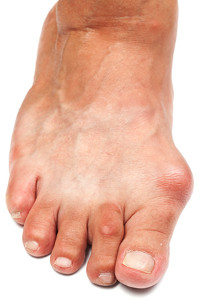 A bunion is considered to be a deformity of the bone. It appears as a protrusion on the side of the big toe, and is often swollen and painful. It is possible for the foot to change shape, and the style of the shoes may have to be altered. The reasons bunions develop can include genetic factors, wearing shoes that fit incorrectly, or medical conditions such as gout or rheumatoid arthritis. This condition can be treated by using bunion pads or wearing custom made orthotics. These may be helpful in alleviating pressure on the foot that comes from the bunion. If this ailment is causing severe pain and daily activities are difficult to complete, surgery may be a consideration for permanent removal of the bunion. Please consult with a podiatrist if you are afflicted with a bunion, and would like additional treatment options.
A bunion is considered to be a deformity of the bone. It appears as a protrusion on the side of the big toe, and is often swollen and painful. It is possible for the foot to change shape, and the style of the shoes may have to be altered. The reasons bunions develop can include genetic factors, wearing shoes that fit incorrectly, or medical conditions such as gout or rheumatoid arthritis. This condition can be treated by using bunion pads or wearing custom made orthotics. These may be helpful in alleviating pressure on the foot that comes from the bunion. If this ailment is causing severe pain and daily activities are difficult to complete, surgery may be a consideration for permanent removal of the bunion. Please consult with a podiatrist if you are afflicted with a bunion, and would like additional treatment options.
If you are suffering from bunions, contact Dr. Dean D. Hinners of Illinois. Our doctor can provide the care you need to keep you pain-free and on your feet.
What Is a Bunion?
A bunion is formed of swollen tissue or an enlargement of boney growth, usually located at the base joint of the toe that connects to the foot. The swelling occurs due to the bones in the big toe shifting inward, which impacts the other toes of the foot. This causes the area around the base of the big toe to become inflamed and painful.
Why Do Bunions Form?
Genetics – Susceptibility to bunions are often hereditary
Stress on the feet – Poorly fitted and uncomfortable footwear that places stress on feet, such as heels, can worsen existing bunions
How Are Bunions Diagnosed?
Doctors often perform two tests – blood tests and x-rays – when trying to diagnose bunions, especially in the early stages of development. Blood tests help determine if the foot pain is being caused by something else, such as arthritis, while x-rays provide a clear picture of your bone structure to your doctor.
How Are Bunions Treated?
- Refrain from wearing heels or similar shoes that cause discomfort
- Select wider shoes that can provide more comfort and reduce pain
- Anti-inflammatory and pain management drugs
- Orthotics or foot inserts
- Surgery
If you have any questions, please feel free to contact one of our offices located in Metropolis and Eldorado, IL . We offer the newest diagnostic and treatment technologies for all your foot care needs.
Read more about BunionsPodiatry as a Career Choice
 If you have conditions concerning your feet and ankles, you will most likely visit a podiatrist. Doctors of this type treat many foot ailments, including bunions, hammertoe, and ingrown toenails. Many podiatrists design custom-made orthotics, in addition to performing corrective surgery. Podiatrists can choose to practice in a variety of venues. These include hospitals, private or group practice, and extended care facilities. Mandatory schooling consists of four years of college, followed by completing two years of residency training. If you are interested in pursuing a career in podiatry, it is strongly suggested that you consult with a podiatrist who can help you in determining if this career path is right for you.
If you have conditions concerning your feet and ankles, you will most likely visit a podiatrist. Doctors of this type treat many foot ailments, including bunions, hammertoe, and ingrown toenails. Many podiatrists design custom-made orthotics, in addition to performing corrective surgery. Podiatrists can choose to practice in a variety of venues. These include hospitals, private or group practice, and extended care facilities. Mandatory schooling consists of four years of college, followed by completing two years of residency training. If you are interested in pursuing a career in podiatry, it is strongly suggested that you consult with a podiatrist who can help you in determining if this career path is right for you.
If you are dealing with pain in your feet and ankles, you may want to seek help from a podiatrist. Feel free to contact Dr. Dean D. Hinners from Illinois. Our doctor can provide the care you need to keep you pain-free and on your feet.
What Is a Podiatrist?
A podiatrist is a doctor of podiatric medicine who diagnoses and treats conditions of the foot, ankle, and related structures of the leg. Your podiatrist may specialize in a certain field such as sports medicine, wound care, pediatrics, and diabetic care. Podiatrists have the ability to become board certified through training, clinical experience, and then taking an exam.
What Do Podiatrists Do?
On a daily basis, a podiatrist may perform the following activities:
- Diagnose foot ailments such as ulcers, tumors, fractures, etc.
- Use innovative methods to treat conditions
- Use corrective orthotics, casts, and strappings to correct deformities
- Correct walking patterns and balance
- Provide individual consultations to patients
It is very important that you take care of your feet. It’s easy to take having healthy feet for granted, however foot problems tend to be among the most common health conditions. Podiatrists can help diagnose and treat a variety of feet related conditions, so it is crucial that you visit one if you need assistance.
If you have any questions please feel free to contact one of our offices located in Metropolis and Eldorado, IL . We offer the newest diagnostic and treatment technologies for all your foot and ankle needs.
Read more about What is a Podiatrist?
Reminder: When Was the Last Time...?
Possible Causes of Flat Feet
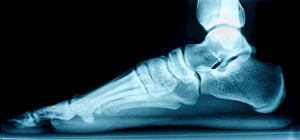 Patients who have flat feet are often aware of the absence of an arch. This is typically noticed while standing as the foot lies flat on the floor. The arch helps to balance the body’s weight between the feet and the legs and will generally determine a person’s walking style. People who have flat feet often notice their feet will roll inward or outward, and this is referred to as overpronation. The most common symptom that is associated with this condition is pain that is felt where the arch should be, and this may be a result of ligaments and muscles that have become strained. Existing medical conditions, which include arthritis or cerebral palsy may cause this condition to occur, in addition to genetic factors. If you have flat feet, it is suggested that you counsel with a podiatrist who can guide you toward proper treatment options.
Patients who have flat feet are often aware of the absence of an arch. This is typically noticed while standing as the foot lies flat on the floor. The arch helps to balance the body’s weight between the feet and the legs and will generally determine a person’s walking style. People who have flat feet often notice their feet will roll inward or outward, and this is referred to as overpronation. The most common symptom that is associated with this condition is pain that is felt where the arch should be, and this may be a result of ligaments and muscles that have become strained. Existing medical conditions, which include arthritis or cerebral palsy may cause this condition to occur, in addition to genetic factors. If you have flat feet, it is suggested that you counsel with a podiatrist who can guide you toward proper treatment options.
Flatfoot is a condition many people suffer from. If you have flat feet, contact Dr. Dean D. Hinners from Illinois. Our doctor will treat your foot and ankle needs.
What Are Flat Feet?
Flatfoot is a condition in which the arch of the foot is depressed and the sole of the foot is almost completely in contact with the ground. About 20-30% of the population generally has flat feet because their arches never formed during growth.
Conditions & Problems:
Having flat feet makes it difficult to run or walk because of the stress placed on the ankles.
Alignment – The general alignment of your legs can be disrupted, because the ankles move inward which can cause major discomfort.
Knees – If you have complications with your knees, flat feet can be a contributor to arthritis in that area.
Symptoms
- Pain around the heel or arch area
- Trouble standing on the tip toe
- Swelling around the inside of the ankle
- Flat look to one or both feet
- Having your shoes feel uneven when worn
Treatment
If you are experiencing pain and stress on the foot you may weaken the posterior tibial tendon, which runs around the inside of the ankle.
If you have any questions please feel free to contact one of our offices located in Metropolis and Eldorado, IL . We offer the newest diagnostic and treatment technologies for all your foot and ankle needs.
Read more about FlatfootWhat Causes Running Injuries?
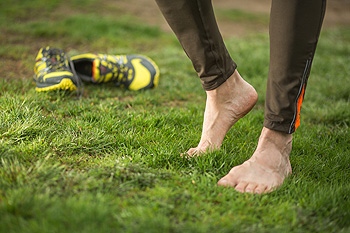 Most runners are aware of injuries that occur if proper stretching is not performed. It can be a result of having weak muscles, overtraining, or not paying attention to current aches and pains. A common injury, which consistent running may produce, often affects the heel of the foot. This is known as plantar fasciitis, and symptoms can include severe pain and discomfort in the heel. This may be prevented by wearing shoes that have adequate support, in addition to performing proper stretching techniques before beginning any running activity. Many patients also endure stress fractures, which often comes from engaging in high-impact running techniques. Prevention is possible by incorporating low-impact activities such as yoga and cycling. If you would like additional information about how running injuries affect the feet, it is suggested that you consult with a podiatrist.
Most runners are aware of injuries that occur if proper stretching is not performed. It can be a result of having weak muscles, overtraining, or not paying attention to current aches and pains. A common injury, which consistent running may produce, often affects the heel of the foot. This is known as plantar fasciitis, and symptoms can include severe pain and discomfort in the heel. This may be prevented by wearing shoes that have adequate support, in addition to performing proper stretching techniques before beginning any running activity. Many patients also endure stress fractures, which often comes from engaging in high-impact running techniques. Prevention is possible by incorporating low-impact activities such as yoga and cycling. If you would like additional information about how running injuries affect the feet, it is suggested that you consult with a podiatrist.
All runners should take extra precaution when trying to avoid injury. If you have any concerns about your feet, contact Dr. Dean D. Hinners of Illinois. Our doctor will treat your foot and ankle needs.
How to Prevent Running Injuries
There are a lot of mistakes a runner can make prior to a workout that can induce injury. A lot of athletes tend to overstretch before running, instead of saving those workouts for a post-run routine. Deep lunges and hand-to-toe hamstring pulls should be performed after a workout instead of during a warmup. Another common mistake is jumping into an intense routine before your body is physically prepared for it. You should try to ease your way into long-distance running instead of forcing yourself to rush into it.
More Tips for Preventing Injury
- Incorporate Strength Training into Workouts - This will help improve the body’s overall athleticism
- Improve and Maintain Your Flexibility – Stretching everyday will help improve overall performance
- “Warm Up” Before Running and “Cool Down” Afterward – A warm up of 5-10 minutes helps get rid of lactic acid in the muscles and prevents delayed muscle soreness
- Cross-Training is Crucial
- Wear Proper Running Shoes
- Have a Formal Gait Analysis – Poor biomechanics can easily cause injury
If you have any questions, please feel free to contact one of our offices located in Metropolis and Eldorado, IL . We offer the newest diagnostic and treatment technologies for all your foot care needs.
Read more about Preventing Running InjuriesPossible Reasons Poor Circulation May Develop
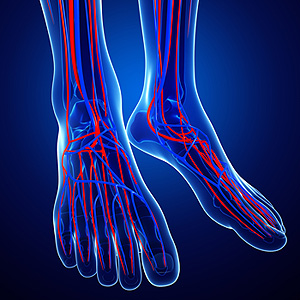 There are numerous symptoms that are associated with poor circulation. Many patients may experience leg cramps, difficulty in healing, or the absence of a pulse in the feet. The condition known as peripheral artery disease (PAD) may be a reason for poor circulation to develop. This condition may gradually produce additional symptoms, including nerve or tissue damage, numbness, or a tingling sensation. Patients who have diabetes may have difficulty sensing foot pain caused by poor circulation. People who are overweight may sit for extended periods of time, and this may lead to the onset of this ailment. If you have any of these symptoms, it is strongly suggested to speak with a podiatrist who can guide you toward proper treatment.
There are numerous symptoms that are associated with poor circulation. Many patients may experience leg cramps, difficulty in healing, or the absence of a pulse in the feet. The condition known as peripheral artery disease (PAD) may be a reason for poor circulation to develop. This condition may gradually produce additional symptoms, including nerve or tissue damage, numbness, or a tingling sensation. Patients who have diabetes may have difficulty sensing foot pain caused by poor circulation. People who are overweight may sit for extended periods of time, and this may lead to the onset of this ailment. If you have any of these symptoms, it is strongly suggested to speak with a podiatrist who can guide you toward proper treatment.
Poor circulation is a serious condition and needs immediate medical attention. If you have any concerns with poor circulation in your feet contact Dr. Dean D. Hinners of Illinois. Our doctor will treat your foot and ankle needs.
Poor Circulation in the Feet
Poor blood circulation in the feet and legs is can be caused by peripheral artery disease (PAD), which is the result of a buildup of plaque in the arteries.
Plaque buildup or atherosclerosis results from excess calcium and cholesterol in the bloodstream. This can restrict the amount of blood which can flow through the arteries. Poor blood circulation in the feet and legs are sometimes caused by inflammation in the blood vessels, known as vasculitis.
Causes
Lack of oxygen and oxygen from poor blood circulation restricts muscle growth and development. It can also cause:
- Muscle pain, stiffness, or weakness
- Numbness or cramping in the legs
- Skin discoloration
- Slower nail & hair growth
- Erectile dysfunction
Those who have diabetes or smoke are at greatest risk for poor circulation, as are those who are over 50. If you have poor circulation in the feet and legs it may be caused by PAD and is important to make changes to your lifestyle in order to reduce risk of getting a heart attack or stroke. Exercise and maintaining a healthy lifestyle will dramatically improve conditions.
As always, see a podiatrist as he or she will assist in finding a regimen that suits you. A podiatrist can also prescribe you any needed medication.
If you have any questions please feel free to contact one of our offices located in Metropolis and Eldorado, IL . We offer the newest diagnostic and treatment technologies for all your foot and ankle needs.
Read more about Causes, Symptoms, and Treatment of Poor Blood Circulation in the FeetPossible Causes of Ingrown Toenails
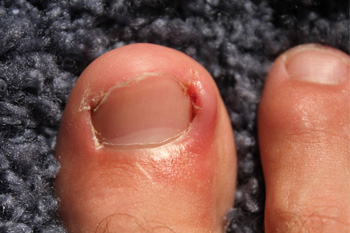 A condition that is known as ingrown toenails may be a result of the toenail growing into the surrounding skin. The big toe is typically affected, and can cause pain and discomfort. There are several symptoms that may be associated with this condition, including possible discharge, redness and irritation around the toe, and pain when the toe is touched. There are many reasons why this ailment might develop. These may include toenails that have been trimmed incorrectly, wearing shoes that may be too tight, or an injury that may have happened to the toe. If you have an ingrown toenail, it may be helpful to gently push the affected skin away from the nail. If it should become infected, it is advised that you consult a podiatrist who can discuss the best treatment options for you.
A condition that is known as ingrown toenails may be a result of the toenail growing into the surrounding skin. The big toe is typically affected, and can cause pain and discomfort. There are several symptoms that may be associated with this condition, including possible discharge, redness and irritation around the toe, and pain when the toe is touched. There are many reasons why this ailment might develop. These may include toenails that have been trimmed incorrectly, wearing shoes that may be too tight, or an injury that may have happened to the toe. If you have an ingrown toenail, it may be helpful to gently push the affected skin away from the nail. If it should become infected, it is advised that you consult a podiatrist who can discuss the best treatment options for you.
Ingrown toenails may initially present themselves as a minor discomfort, but they may progress into an infection in the skin without proper treatment. For more information about ingrown toenails, contact Dr. Dean D. Hinners of Illinois. Our doctor can provide the care you need to keep you pain-free and on your feet.
Ingrown Toenails
Ingrown toenails are caused when the corner or side of a toenail grows into the soft flesh surrounding it. They often result in redness, swelling, pain, and in some cases, infection. This condition typically affects the big toe and may recur if it is not treated properly.
Causes
- Improper toenail trimming
- Genetics
- Improper shoe fitting
- Injury from pedicures or nail picking
- Abnormal gait
- Poor hygiene
You are more likely to develop an ingrown toenail if you are obese, have diabetes, arthritis, or have any fungal infection in your nails. Additionally, people who have foot or toe deformities are at a higher risk of developing an ingrown toenail.
Symptoms
Some symptoms of ingrown toenails are redness, swelling, and pain. In rare cases, there may be a yellowish drainage coming from the nail.
Treatment
Ignoring an ingrown toenail can have serious complications. Infections of the nail border can progress to a deeper soft-tissue infection, which can then turn into a bone infection. You should always speak with your podiatrist if you suspect you have an ingrown toenail, especially if you have diabetes or poor circulation.
If you have any questions, please feel free to contact one of our offices located in Metropolis and Eldorado, IL . We offer the newest diagnostic and treatment technologies for all your foot care needs.
Read more about Ingrown ToenailsCauses of Bunions
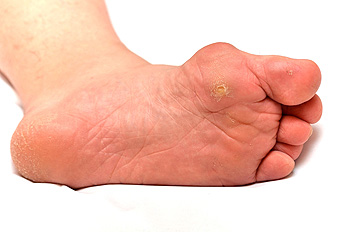 Research has indicated that bunions may be caused by genetic factors. Additional reasons why bunions may develop may be from wearing shoes that do not have adequate room for the toes to move freely in. This may result in the big toe pointing toward the other toes, and the bone may protrude on the side of the big toe. There may be medical conditions that exist which can precede the formation of bunions. These may include gout and rheumatoid arthritis. Many patients choose to treat the symptoms of bunions with orthotics or bunion pads. If the symptoms are severe, having surgery performed may be a viable option for permanent removal of the bunion. An effective way of preventing this condition from developing may be to wear shoes that fit correctly and have a lower heel. If you have severe bunions, it is suggested to speak to a podiatrist who can guide you toward proper treatment.
Research has indicated that bunions may be caused by genetic factors. Additional reasons why bunions may develop may be from wearing shoes that do not have adequate room for the toes to move freely in. This may result in the big toe pointing toward the other toes, and the bone may protrude on the side of the big toe. There may be medical conditions that exist which can precede the formation of bunions. These may include gout and rheumatoid arthritis. Many patients choose to treat the symptoms of bunions with orthotics or bunion pads. If the symptoms are severe, having surgery performed may be a viable option for permanent removal of the bunion. An effective way of preventing this condition from developing may be to wear shoes that fit correctly and have a lower heel. If you have severe bunions, it is suggested to speak to a podiatrist who can guide you toward proper treatment.
If you are suffering from bunion pain, contact Dr. Dean D. Hinners of Illinois. Our doctor can provide the care you need to keep you pain-free and on your feet.
What Is a Bunion?
Bunions are painful bony bumps that usually develop on the inside of the foot at the joint of the big toe. As the deformity increases over time, it may become painful to walk and wear shoes. Women are more likely to exacerbate existing bunions since they often wear tight, narrow shoes that shift their toes together. Bunion pain can be relieved by wearing wider shoes with enough room for the toes.
Causes
- Genetics – some people inherit feet that are more prone to bunion development
- Inflammatory Conditions - rheumatoid arthritis and polio may cause bunion development
Symptoms
- Redness and inflammation
- Pain and tenderness
- Callus or corns on the bump
- Restricted motion in the big toe
In order to diagnose your bunion, your podiatrist may ask about your medical history, symptoms, and general health. Your doctor might also order an x-ray to take a closer look at your feet. Nonsurgical treatment options include orthotics, padding, icing, changes in footwear, and medication. If nonsurgical treatments don’t alleviate your bunion pain, surgery may be necessary.
If you have any questions, please feel free to contact one of our offices located in Metropolis and Eldorado, IL . We offer the newest diagnostic and treatment technologies for all your foot care needs.
Read more about What Are Bunions?More...
How to Prevent Athlete’s Foot
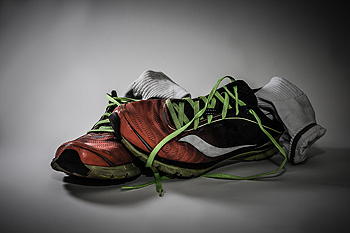 The symptoms of a condition that is referred to as athlete’s foot may consist of dry, flaky and cracked skin between the toes or on the soles of the feet. It is typically caused by a fungus which thrives in warm and moist areas. These may include public swimming pools, shower room floors, or locker rooms. It is known to be extremely contagious, and there are measures that can be implemented to avoid contracting athlete’s foot. These may consist of wearing appropriate shoes in public areas, and keeping your shoes and socks dry. Additionally, it may be helpful to wash and dry your feet daily, followed by utilizing a powder between the toes. This may aid in keeping the feet dry. If you have athlete’s foot, it is advised to consult with a podiatrist who can properly diagnosis and treat this condition.
The symptoms of a condition that is referred to as athlete’s foot may consist of dry, flaky and cracked skin between the toes or on the soles of the feet. It is typically caused by a fungus which thrives in warm and moist areas. These may include public swimming pools, shower room floors, or locker rooms. It is known to be extremely contagious, and there are measures that can be implemented to avoid contracting athlete’s foot. These may consist of wearing appropriate shoes in public areas, and keeping your shoes and socks dry. Additionally, it may be helpful to wash and dry your feet daily, followed by utilizing a powder between the toes. This may aid in keeping the feet dry. If you have athlete’s foot, it is advised to consult with a podiatrist who can properly diagnosis and treat this condition.
Athlete’s foot is an inconvenient condition that can be easily reduced with the proper treatment. If you have any concerns about your feet and ankles, contact Dr. Dean D. Hinners from Illinois. Our doctor will treat your foot and ankle needs.
Athlete’s Foot: The Sole Story
Athlete's foot, also known as tinea pedis, can be an extremely contagious foot infection. It is commonly contracted in public changing areas and bathrooms, dormitory style living quarters, around locker rooms and public swimming pools, or anywhere your feet often come into contact with other people.
Solutions to Combat Athlete’s Foot
- Hydrate your feet by using lotion
- Exfoliate
- Buff off nails
- Use of anti-fungal products
- Examine your feet and visit your doctor if any suspicious blisters or cuts develop
Athlete’s foot can cause many irritating symptoms such as dry and flaking skin, itching, and redness. Some more severe symptoms can include bleeding and cracked skin, intense itching and burning, and even pain when walking. In the worst cases, Athlete’s foot can cause blistering as well. Speak to your podiatrist for a better understanding of the different causes of Athlete’s foot, as well as help in determining which treatment options are best for you.
If you have any questions please feel free to contact one of our offices located in Metropolis and Eldorado, IL . We offer the newest diagnostic and treatment technologies for all your foot and ankle needs.
Read more about How to Deal with Athlete's FootWhat Causes Morton’s Neuroma?
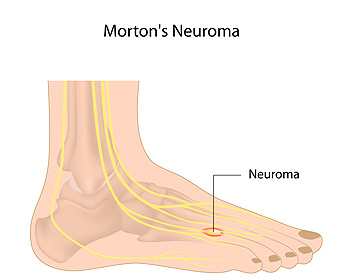 If you have a condition that is known as Morton’s neuroma, you may notice pain in the ball of the foot. This may be a result of an irritated nerve that has become enlarged, and may occur between the third and fourth toes. Patients who are afflicted with this condition may notice a burning sensation in the sole of the foot, in addition to the toes possibly becoming numb. A common reason why Morton’s neuroma may develop may include wearing shoes that are too tight, or choosing footwear that does not provide adequate room for the toes to move freely in. This may cause pressure to be exerted on the nerves in the toes, which may cause pain and discomfort. Existing medical conditions may precede the development of Morton’s neuroma, and these may include bunions, hammertoes, or flat feet. Mild relief may be found in resting the foot, and performing gentle stretching exercises. If you have symptoms of this condition, it is advised that you consult with a podiatrist who can properly treat Morton’s neuroma.
If you have a condition that is known as Morton’s neuroma, you may notice pain in the ball of the foot. This may be a result of an irritated nerve that has become enlarged, and may occur between the third and fourth toes. Patients who are afflicted with this condition may notice a burning sensation in the sole of the foot, in addition to the toes possibly becoming numb. A common reason why Morton’s neuroma may develop may include wearing shoes that are too tight, or choosing footwear that does not provide adequate room for the toes to move freely in. This may cause pressure to be exerted on the nerves in the toes, which may cause pain and discomfort. Existing medical conditions may precede the development of Morton’s neuroma, and these may include bunions, hammertoes, or flat feet. Mild relief may be found in resting the foot, and performing gentle stretching exercises. If you have symptoms of this condition, it is advised that you consult with a podiatrist who can properly treat Morton’s neuroma.
Morton’s neuroma is a very uncomfortable condition to live with. If you think you have Morton’s neuroma, contact Dr. Dean D. Hinners of Illinois. Our doctor will attend to all of your foot care needs and answer any of your related questions.
Morton’s Neuroma
Morton's neuroma is a painful foot condition that commonly affects the areas between the second and third or third and fourth toe, although other areas of the foot are also susceptible. Morton’s neuroma is caused by an inflamed nerve in the foot that is being squeezed and aggravated by surrounding bones.
What Increases the Chances of Having Morton’s Neuroma?
- Ill-fitting high heels or shoes that add pressure to the toe or foot
- Jogging, running or any sport that involves constant impact to the foot
- Flat feet, bunions, and any other foot deformities
Morton’s neuroma is a very treatable condition. Orthotics and shoe inserts can often be used to alleviate the pain on the forefront of the feet. In more severe cases, corticosteroids can also be prescribed. In order to figure out the best treatment for your neuroma, it’s recommended to seek the care of a podiatrist who can diagnose your condition and provide different treatment options.
If you have any questions, please feel free to contact one of our offices located in Metropolis and Eldorado, IL . We offer the newest diagnostic and treatment technologies for all your foot care needs.
Read more about Morton's NeuromaFlip Flops May Provide Inadequate Stability
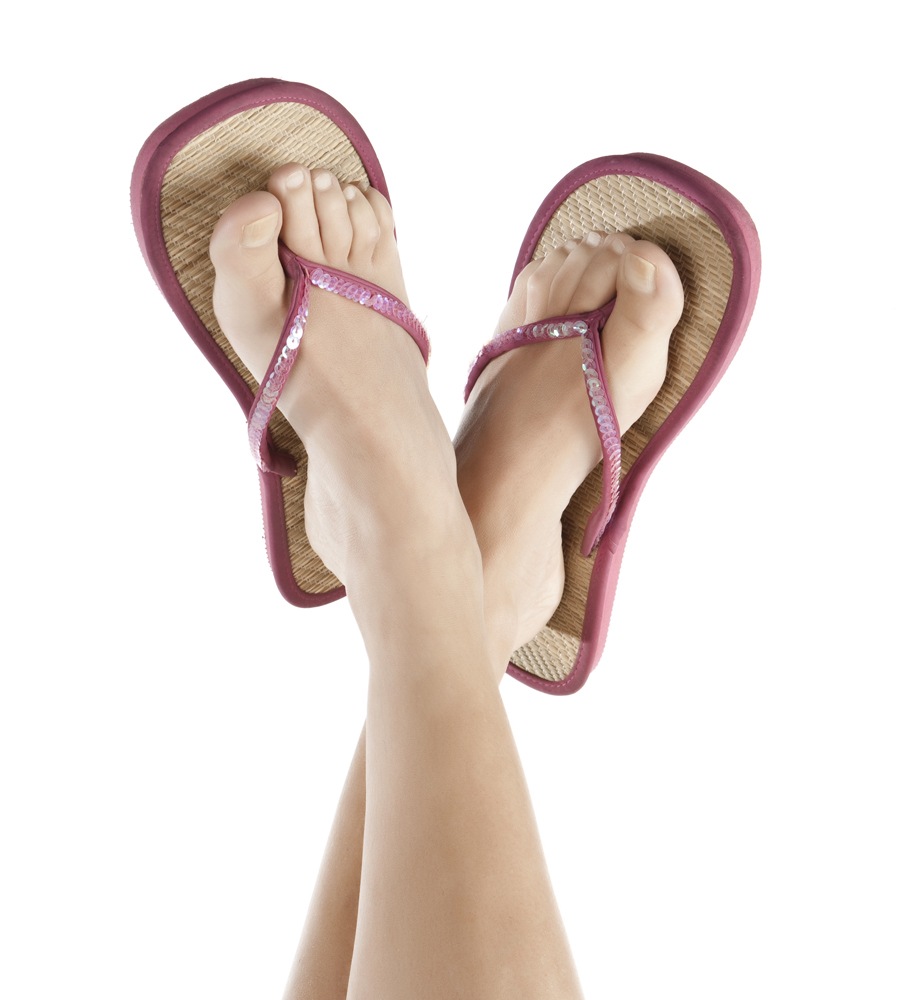 The name of the shoes that are known as flip flops comes from the sound that is made while they are being worn. Despite the fact they are a popular summer shoe and are fun to wear, they may cause subtle changes to the foot as a result of the change in gait. The majority of flip flops do not provide adequate support and stability for the foot, and this may cause the toes to grip the front of the shoe. Pain may gradually be felt in the sole of the foot, and this may be indicative of plantar fasciitis. Many people find their ankles may roll inward while walking in an effort to keep the shoe on, and this may lead to unwanted ankle problems. There may be other choices of shoes to wear that can positively affect the foot, and if you would like additional information about this, it is suggested to speak to a podiatrist.
The name of the shoes that are known as flip flops comes from the sound that is made while they are being worn. Despite the fact they are a popular summer shoe and are fun to wear, they may cause subtle changes to the foot as a result of the change in gait. The majority of flip flops do not provide adequate support and stability for the foot, and this may cause the toes to grip the front of the shoe. Pain may gradually be felt in the sole of the foot, and this may be indicative of plantar fasciitis. Many people find their ankles may roll inward while walking in an effort to keep the shoe on, and this may lead to unwanted ankle problems. There may be other choices of shoes to wear that can positively affect the foot, and if you would like additional information about this, it is suggested to speak to a podiatrist.
Flip-flops are not always the best choice of footwear. If you have any concerns about your feet or ankles, contact Dr. Dean D. Hinners from Illinois. Our doctor will assist you with all of your foot and ankle needs.
Flip-Flops and Feet
When the weather starts warming up, people enjoy wearing flip-flops. Flip-flops are comfortable, stylish, and easy to slip on and off; they're perfect for any summer beach goer. However, these shoes can cause harm to the feet.
How Can Flip-Flops Affect Me Long-Term?
- Ankle problems
- Hip problems
- Lower back problems
- Pain in the balls of the feet
- Problems with foot arches
- Changes in the way you walk
Are There Injuries Associated with Flip-Flops?
Yes. Since flip-flops are relatively weak and do not provide the same amount of support as sneakers, people who wear flip-flops regularly are more susceptible to injuries. On top of that, the open nature of the shoe makes your feet more prone to other problems, such as cuts and even infections. Common injuries and ailments include:
- Sprained ankles
- Blisters
- Infections
- Cuts and Scrapes
I like Wearing Flip-Flops. Are There Safe Alternatives?
When buying flip-flops, try to find ones that have sturdy soles and that are made of high-quality materials that will support for your feet. These flip-flops will cost more but will also last longer as a result.
If you have any questions please feel free to contact one of our offices located in Metropolis and Eldorado, IL . We offer the newest diagnostic and treatment technologies for all your foot and ankle needs.
Read more about Flip Flops and Your FeetIs Foot Therapy Effective?
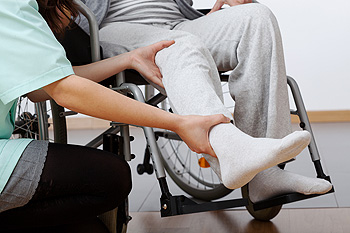 If an injury should occur to the foot or ankle, foot therapy may be an avenue that is pursued to obtain mild relief. There are many foot conditions that would benefit from having physical therapy performed, and these may include plantar fasciitis, or foot and ankle stress fractures. Some patients find it helpful to use this form of therapy to aid in recovering from foot or ankle surgery, and it may help in regaining full range of motion. Additionally, flexibility and overall strength in the feet and ankles may improve when specific muscles are stretched. If you would like to know more about the benefits of foot therapy, please consult with a podiatrist who can properly guide you.
If an injury should occur to the foot or ankle, foot therapy may be an avenue that is pursued to obtain mild relief. There are many foot conditions that would benefit from having physical therapy performed, and these may include plantar fasciitis, or foot and ankle stress fractures. Some patients find it helpful to use this form of therapy to aid in recovering from foot or ankle surgery, and it may help in regaining full range of motion. Additionally, flexibility and overall strength in the feet and ankles may improve when specific muscles are stretched. If you would like to know more about the benefits of foot therapy, please consult with a podiatrist who can properly guide you.
Foot therapy is often necessary for those recovering from either foot deformities or foot injuries. If you have concerns regarding therapy, Dr. Dean D. Hinners of Illinois. Our doctor can provide the care you need to keep you pain-free and on your feet.
Most Common Injuries
People who are active or athletes are prone to a variety of injuries. Therefore, it is often important to take part in physical therapy in order to quickly get back on the right track.
What to Do When Injured
Physical Therapy – This specialized treatment will focus on the affected area, speeding up recovery and the overall healing process. It is a proven method that has helped millions of people return from any injury.
During physical therapy you will undergo regimented training to get back into full form. Training is often very difficult, especially at first when the foot feels weak. Physical therapy often involves:
Basic stretching and twisting exercises – getting the feet’s mobility and flexibility up.
Massaging – the therapist will massage the injured area in order to activate the muscles and relax them.
Strengthening Exercises – this allows the muscles in the affected area to regain their full strength, a vital step towards full recovery.
If you have any questions please feel free to contact one of our offices located in Metropolis and Eldorado, IL . We offer the newest diagnostic tools and technology to treat your foot and ankle needs.
Read more about Foot Therapy for Sports Injuries